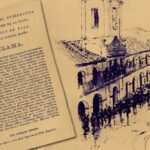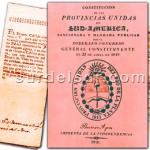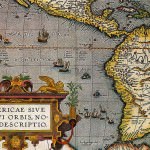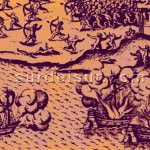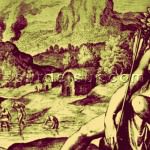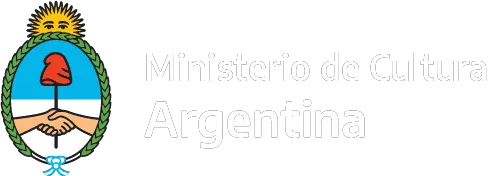The process, of formation of the Argentine state, has several fundamental episodes to highlight. Here we will tell what were those chapters of our history, that transformed the Spanish colonies of the United Provinces of the Río de la Plata, into a free and independent nation, called the Argentine Republic, the official name of our country since October 8, 1860.
CONTENT
Revolution on May 25, 1810
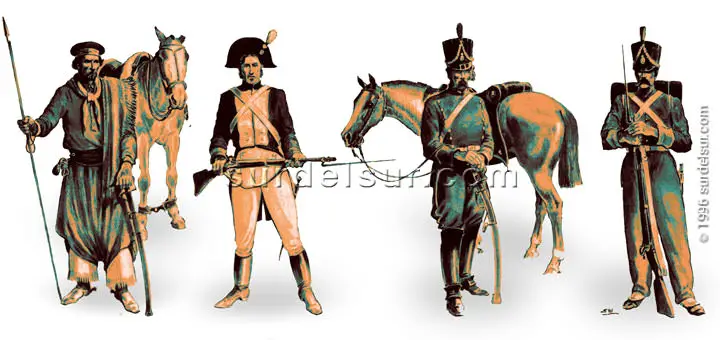
Winds of renewal were sweeping the world, but those Spanish colonies located in the south of South America – although far from the most important geopolitical centers – were not immune to them.
In 1776, the independence of the United States of North America from the British Empire occurred. These events radiated a message of freedom and independence, which reached the remote south.
Subsequently, the storming of the Bastille in France, on July 14, 1789, indicated a shift of power from the absolutist monarchy to the bourgeoisie. Engine of the French Revolution, this new ascending social class, put limits on feudal power. Thus the flags of freedom, equality and fraternity began to travel around the world and penetrated deeply into the minds of the patriots.
After the Napoleonic invasion of Spain, and the consequent imprisonment of its king, a power vacuum occurs. This situation unleashed a revolutionary wave in the colony, which still governed the Viceroyalty of the Río de la Plata.
In this way, the Creoles finally became the makers of their laws and destinies. With the Revolution of May 25, 1810, and the election of the first national government, they took the initial step towards the formation of the Argentine state.
The revolutionary movement was animated by independence ideas and the opportunity that presented itself with the acephaly of the Spanish government; He deposed the Viceroy and appointed a governing board, called the First Board.
Read more about May Week and the First National Government >>
Independence of Argentina
Las Provincias Unidas del Río de la Plata, habían iniciado su camino hacia la libertad, pero hubo que esperar seis años más de dudas y retrocesos, para que se concretara la anhelada Independencia.
El 9 de Julio de 1816 se firma el Acta, por la cual, el Congreso de Tucumán proclama la Independencia de las Provincias Unidas de América del Sur. En ésta oportunidad, se dictó el Estatuto Provisional de 1816. Luego, se concibió el Reglamento Provisorio de 1817, y posteriormente la Constitución de las Provincias Unidas de Sudamérica en 1819.
La primera constitución, promulgada en 1819, creó el marco legal para un país unitario, es decir, el poder se centraría en la ciudad capital.
Pero lo cierto es que lejos de terminar, las dificultades recién habían comenzado.
Como era de esperarse, las provincias se opusieron a mantener esta situación, y propusieron un régimen federal, que les otorgara un margen de autonomía.
Fue una lucha sangrienta la de unitarios y federales, y protagonizó la escena política durante los primeros y largos años del joven país en su camino hacia la formación del estado argentino.
Foundation of the Argentine State, creation of Argentina
In 1825, the fundamental law changed the name of the United Provinces of South America to the United Provinces of the Río de la Plata. Finally, the 1826 Constitution, converted the United Provinces into the Argentine Nation.
Constitution of 1826
Between the May Revolution and the Constitution of 1826, the dismemberment of the territories that had been part of the Viceroyalty of the Río de la Plata took place. That is to say, since the formation of the State in 1826, the territory of Argentina acquired its current profile.
The bordering countries Paraguay, Bolivia, and Uruguay, members of Argentina of the then Viceroyalty of Río de la Plata, achieved their independence. Paraguay had already become independent in 1811. In 1825, the Republic of Bolivia declared its independence (since 2009 it has been called the Plurinational State of Bolivia). But balkanization became evident, with the uprising of the Banda Oriental in 1826, and its subsequent delivery to Brazil.
Constitution of 1853
Federalism partially achieved its objectives with the Constitution of 1853, which established the republican, representative, and federal system, a fundamental step in the Formation of the Argentine State.
However, although the preamble of the 1853 Constitution establishes the objective of “constituting national unity, strengthening justice and consolidating internal peace”, it could not end the confrontations between Buenos Aires and the provinces.
Federalization of the City of Buenos Aires
We had to wait until 1880, when the City of Buenos Aires was chosen as the Federal Capital of the Argentine Republic, becoming independent from the province of Buenos Aires, which founded its capital in 1882: the city of La Plata.
The truth is that the power of Buenos Aires as a port city and master key to agricultural exports, the basis of the Argentine economy, would condition the history of the Country.
We also suggest you check related to this report: Conquest and Colonization of the Río de la Plata, Argentina before Becoming a Nation-State, Argentine Modern State
WAS THE ARTICLE USEFUL TO YOU? SAVE IT!!
READ THE RELATED ARTICLE…!
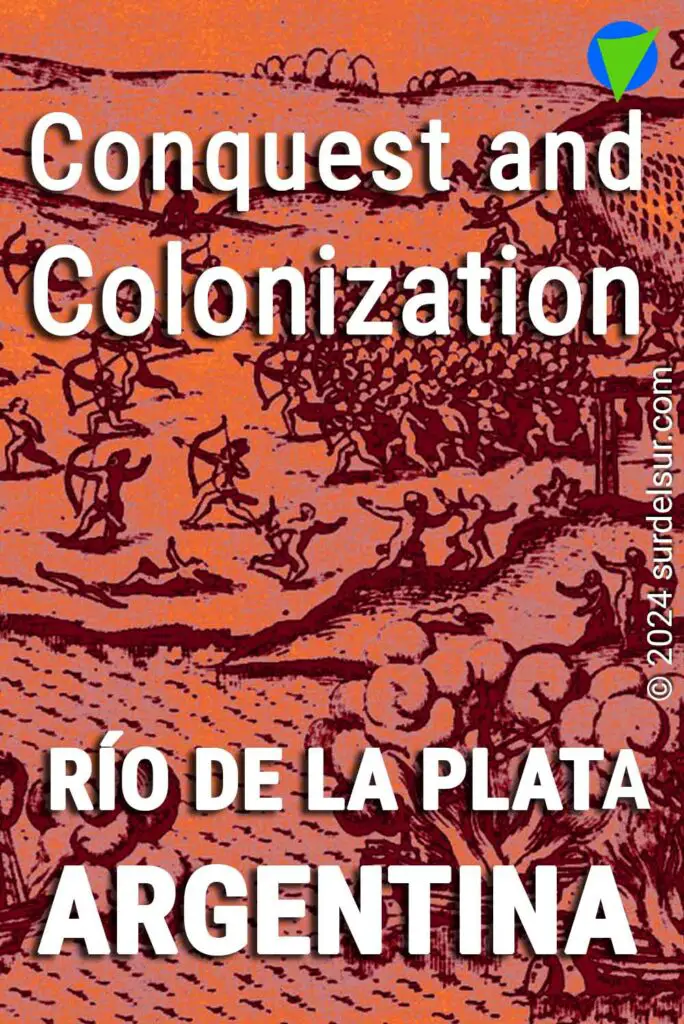
References:
All graphic material in this report is edited digitally. The customized version by surdelsur.com shown on this page is performed based on the following documents:
- Fernández Villanueva, Julio (Plastic Artist, Medical). (1858-1890). The May 25, 1810 [Drawing]. Buenos Aires. A. Santa Marina Collection.
- Cabildo de la Ciudad de Buenos Aires. Summons to the Open Meeting (May 22, 1810) [Document].
- Sovereign General Constituent Congress. Constitution of the United Provinces of South America (1819) [Document]. Printing of Independence.
- Pérez, Genaro (Lawyer, Theologian, Painter). (1839 – 1900). House of Constitutional Convention in San Miguel de Tucumán. [Oil].
- Marenco, Eleodoro (Fine Artist). (1914-1996). Soldiers of Independence War (Izq. a Der.): Dragones de la Patria, 1810, Buenos Aires; Patricios de Salta, 1810; Regimiento de Granaderos a Caballo, 1812; Cazadores de los Andes, 1816. [Drawing]


